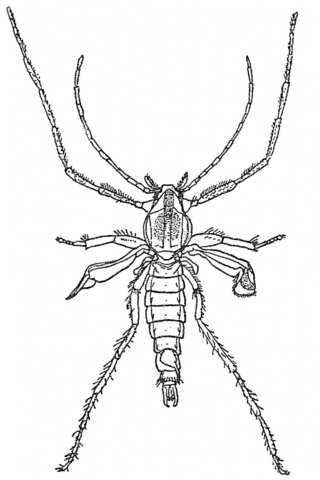
The Chironomidae comprise a family of nematoceran flies with a global distribution. They are closely related to the Ceratopogonidae, Simuliidae, and Thaumaleidae. Many species superficially resemble mosquitoes, but they lack the wing scales and elongated mouthparts of the Culicidae.

The genus Axarus is widely distributed with records from the Holarctic, the Neotropics and Australasia . There are currently 5 described nearctic species . Erected as a subgenus (Anceus) of Xenochironomus , Axarus was subsequently renamed and elevated to generic status . The Connecticut River in the eastern United States harbors locally dense populations of two Axarus species, both currently undescribed. These populations are interesting in that they are restricted to specific larval habitat and thus there is genetic structure between populations in the river . The Connecticut River species are also notable in that they have extremely well developed polytene chromosomes and also maintain a high degree of inversion polymorphism .
Clunio is a genus of non-biting midges in the subfamily Orthocladiinae of the bloodworm family (Chironomidae). All species in the genus are marine. They are found in the intertidal zone of many coasts worldwide. The species Clunio marinus is a long-standing model system in Chronobiology and its genome has been sequenced. Clunio species can be dispersed widely by hitch-hiking on sea-turtles, feeding on algae growing on their carapace.

Chironomus is a genus of nonbiting midges in the subfamily Chironominae of the bloodworm family, Chironomidae, containing several cryptic species that can only be distinguished by experts based on the characteristics of their giant chromosomes.

Tanytarsus is a large genus of non-biting midges of the tribe Tanytarsini and subfamily Chironominae of the bloodworm family (Chironomidae). The larvae of these insects occur in a wide range of freshwater habitats with some species being marine.

Chironomini is a tribe of midges in the non-biting midge family (Chironomidae).
Beckidia is a genus of non-biting midges in the subfamily Chironominae of the bloodworm family Chironomidae.

Polypedilum is a genus of non-biting midges in the subfamily Chironominae of the bloodworm family Chironomidae. This is probably the most species-rich of all chironomid genera. Larvae of Polypedilum may also be among the most abundant invertebrates in eutrophic ponds, reaching densities of up to 1200 larvae per square meter.
Nilothauma is a genus of European non-biting midges in the subfamily Chironominae of the bloodworm family Chironomidae.

Microtendipes is a genus of non-biting midges in the subfamily Chironominae of the bloodworm family Chironomidae.

Sergentia is a genus of European non-biting midges in the subfamily Chironominae of the bloodworm family Chironomidae.
Demicryptochironomus is a genus of European non-biting midges in the subfamily Chironominae of the bloodworm family Chironomidae.
Demeijerea is a genus of non-biting midges in the subfamily Chironominae of the bloodworm family Chironomidae.
Omisus is a genus of non-biting midges in the subfamily Chironominae of the bloodworm family Chironomidae.

Tribelos is a genus of non-biting midges in the subfamily Chironominae of the bloodworm family Chironomidae.
Paralauterborniella is a genus of non-biting midges in the subfamily Chironominae of the bloodworm family Chironomidae. Apedilum was formerly considered a junior synonym of this genus, but was restored as a separate genus by J. H. Epler (1988) for the species A. elachistus and A. subcinctum.
Platysmittia is a genus of midges in the non-biting midge family (Chironomidae).

Pontomyia is a genus of flightless marine midges belonging to the subfamily Chironominae in the Chironomidae family. Insects in marine environments are extremely rare while flightlessness, extreme sexual dimorphism, and an extremely short adult life span contribute to making these midges unusual among insects. They are known from the shores of islands in the Indian, Atlantic and Pacific Oceans.

Goeldichironomus is a genus of midges in the family Chironomidae. There are about 14 described species in Goeldichironomus. Most species are found in tropical America, with G. carus ranging north to the southern United States.

Apedilum elachistus is a species of midge in the family Chironomidae.









